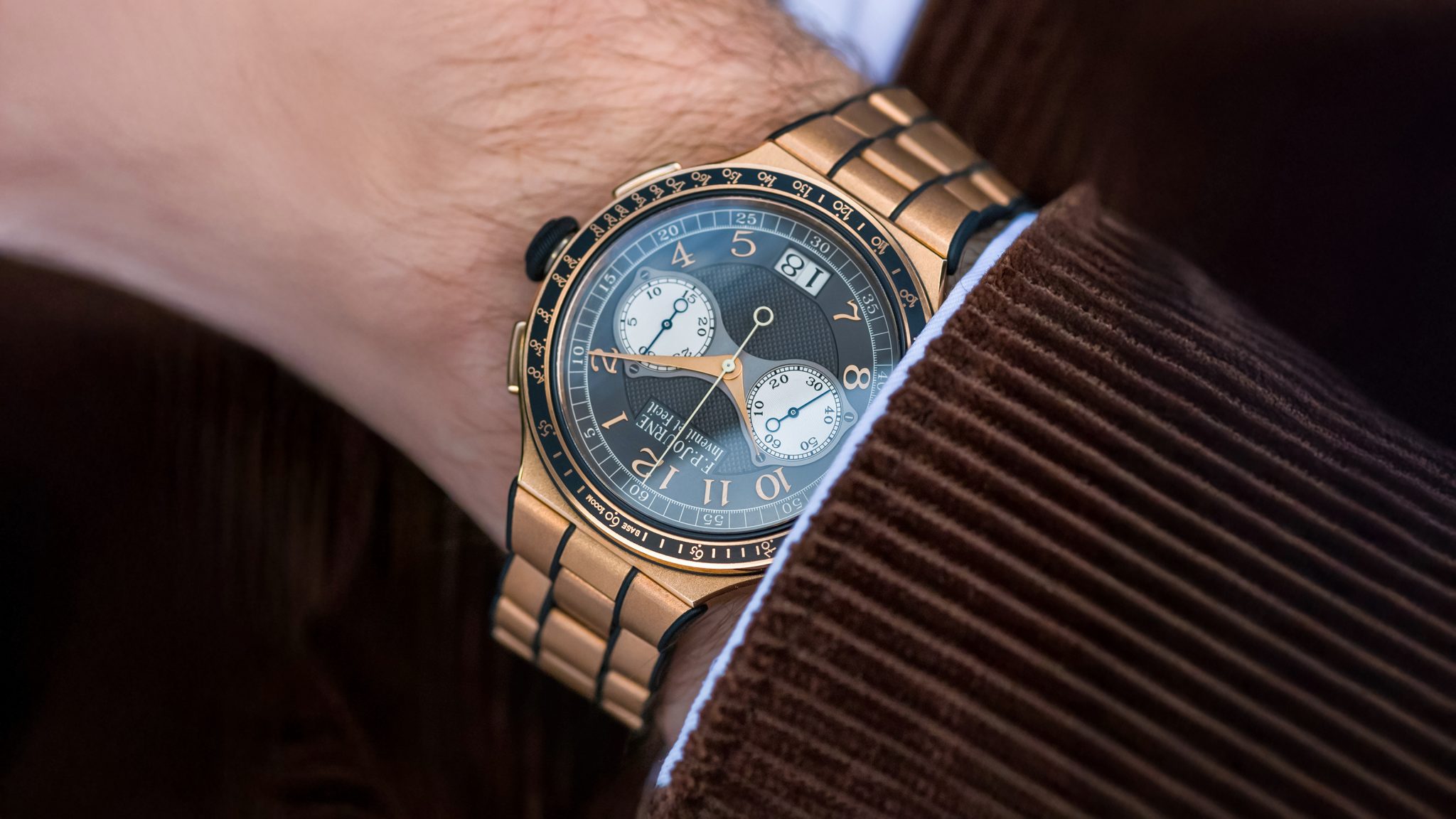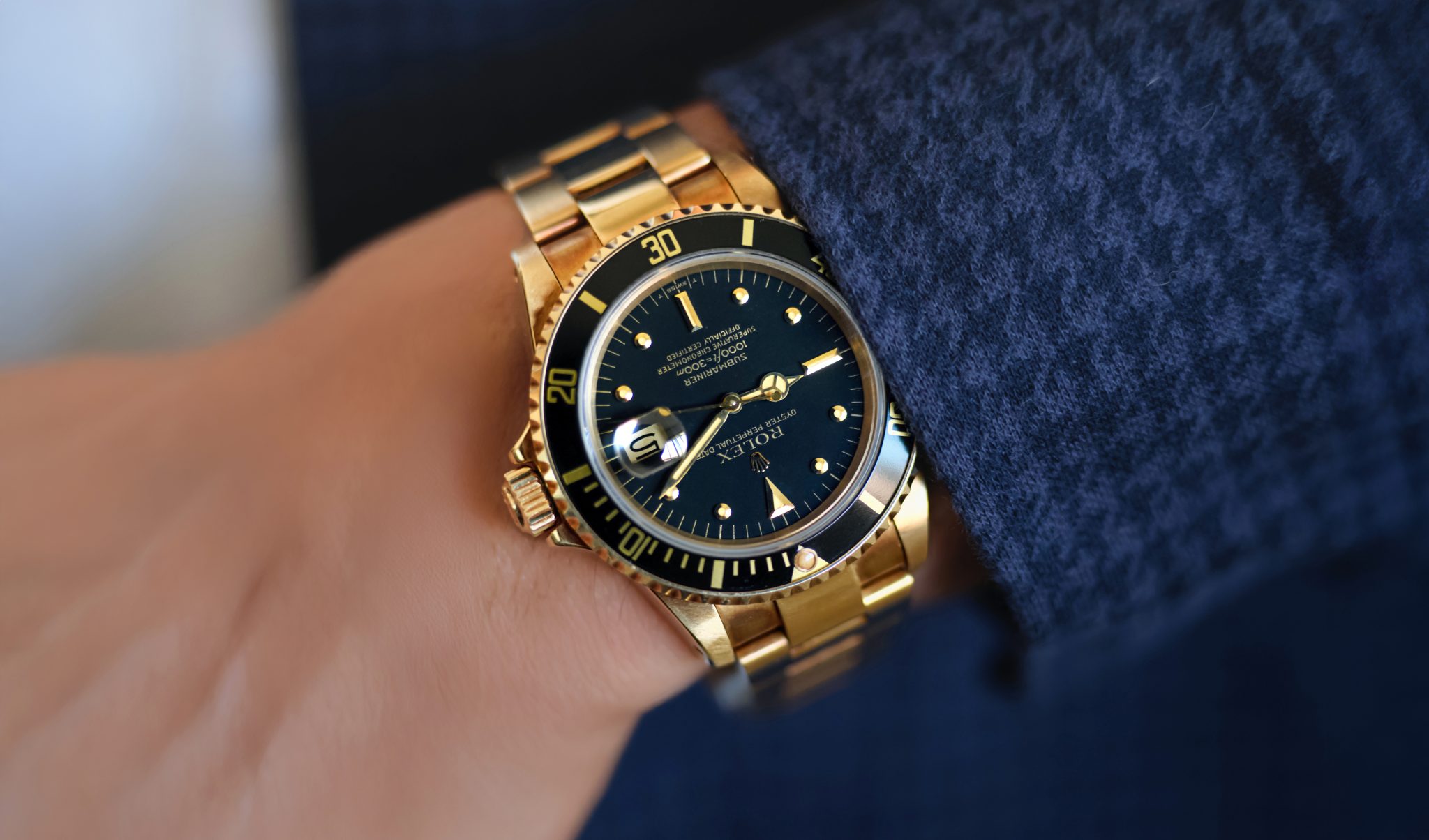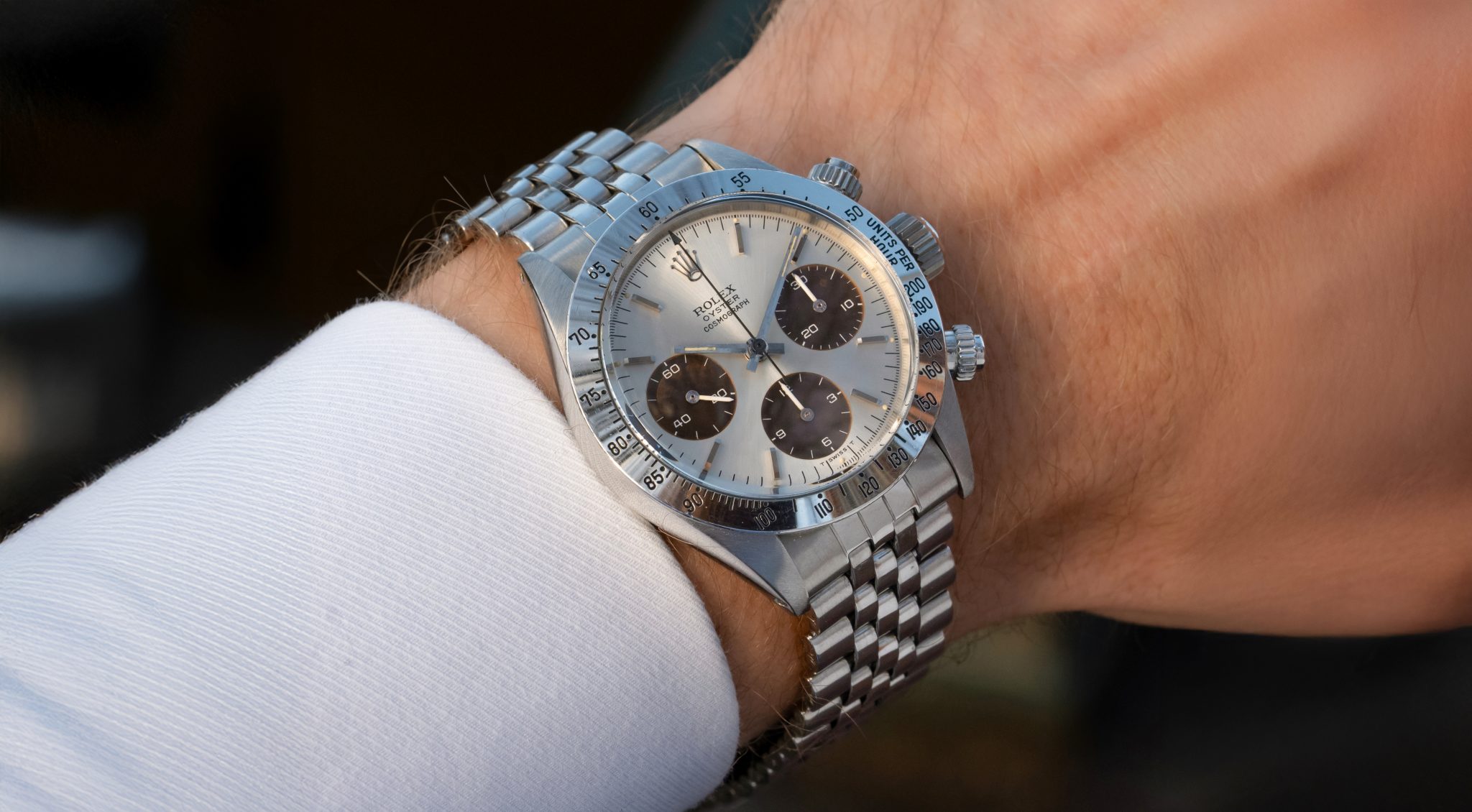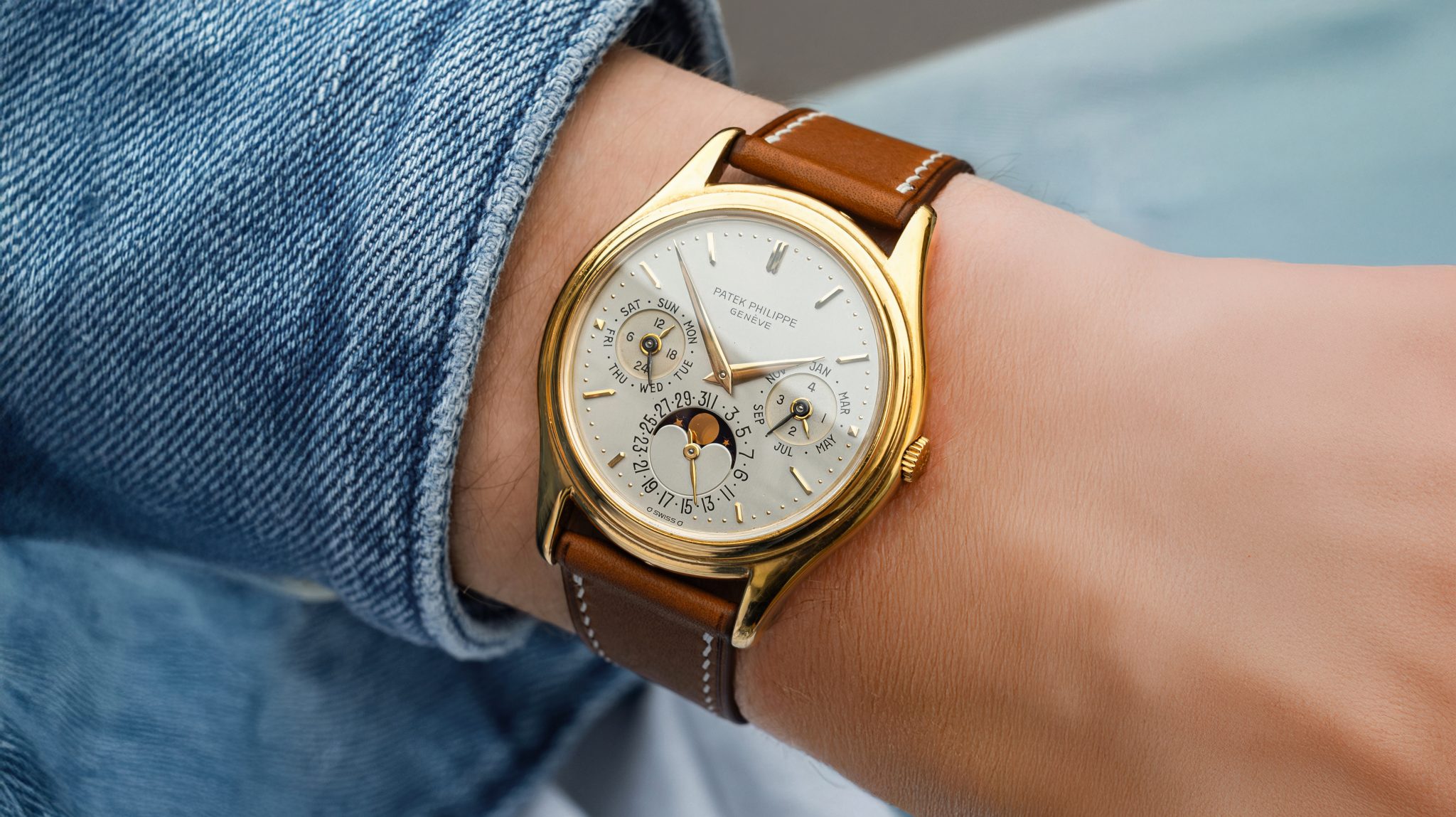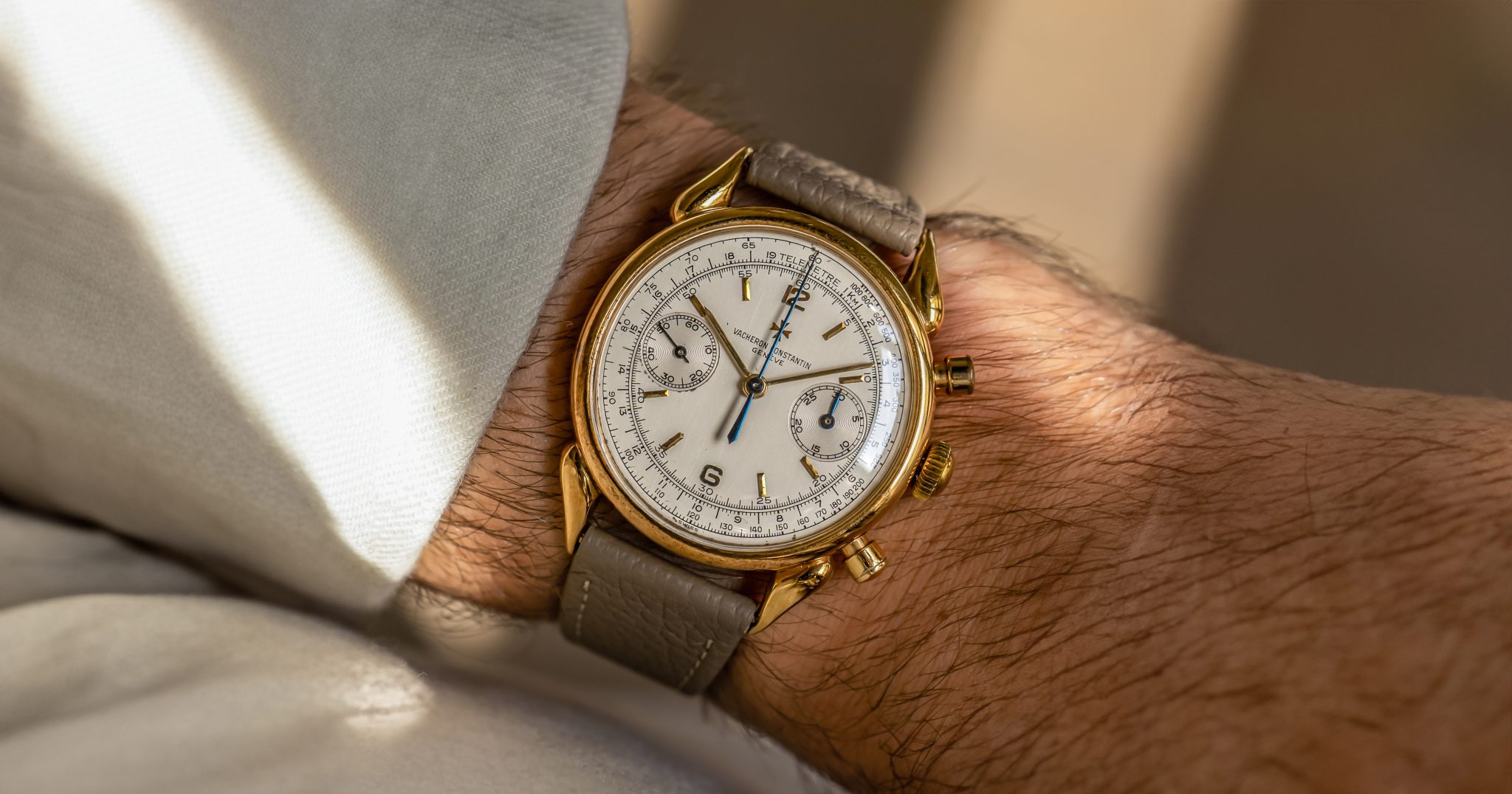
6087 Vacheron Constantin Cornes de Vache Chronograph
This ref. 6087 was Vacheron Constantin’s answer to the water resistant 1463 ‘Tasti Tondi’, though released considerably after. Even in the mid-century Vacheron were the slowest moving of the holy trinity. However, where they landed is so expressive that it has stood the test of time as one of the most artful case shapes ever made. Expressive and timeless don’t often go together, but they do here. Yes, it’s a slight alteration on the teardrop, but so much more refined. The 6087 is better known as the original ‘Cornes de Vache’ or ‘Cow Horn’. It is, easily, one of the most historically significant Vacherons there is. Much as we all love 4178s and 4072s, let’s face it: this is thee Vacheron chronograph.
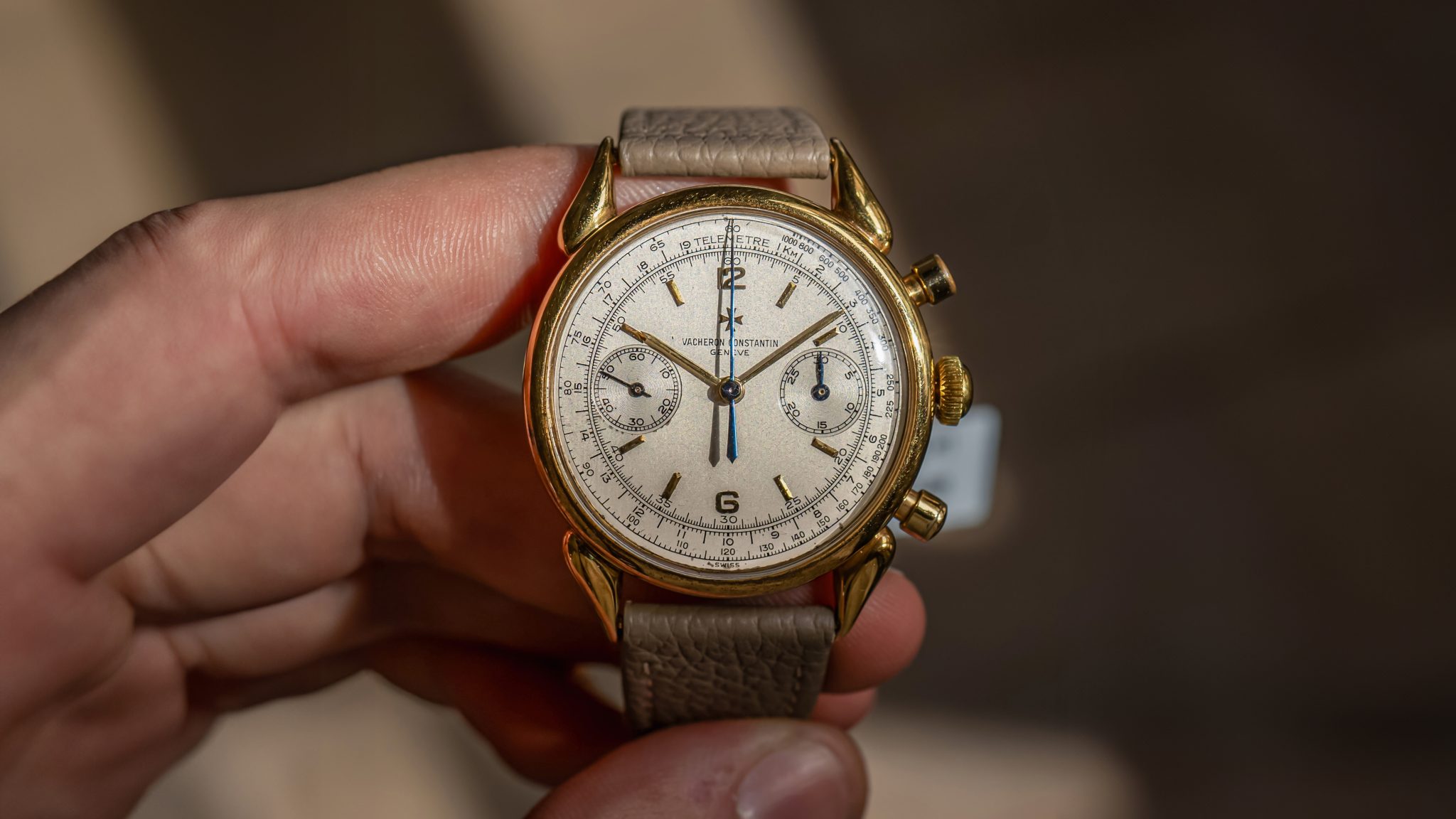
The Cornes de Vache was introduced in 1955, some 15 years after Patek’s innovation in water resistance. The back was screw-down and the pushers were round, a quite contemporary construction in what was then considered a large 35.5mm case. Production was sporadic and often on a per-order basis, leading many known examples to have wildly different characteristics. Ultimately, according to The Hour Lounge, 36 were made: 26 in yellow gold, 8 in pink, and interestingly, a pair in platinum which didn’t have cow horn lugs. Most shared numerals at only 12 and 6, setting the template for the reissue we know today. But then some have scales, some do not. And each example has a slightly distinct lug shape, as they were crafted by hand and soldered. Some are pointier, others more stout. It truly is an interesting study in handcraft.
6078 values have been all over the map, but then we’re talking about ultra-low-volume vintage, heavily dependent on condition. Since 2015, three have shown up. The two in yellow gold hammered between 100-130K USD. Then Antiquorum had one in pink gold which hit 226K. These are, correctly, valued as Tasti Tondi levels today. Where other non-water-resistance earlier Vacheron Chronographs like the 4072 and 4178 were made in many hundreds of examples, this very significant and significantly sexy ref is just not out there very much. No surprise, then, to see it’s also in a collection with a 1563 and black dial 2499. It might just be the one for us mere mortals to watch at this sale. It’s just a shame no one seems to know who made these cases or designed this shape.
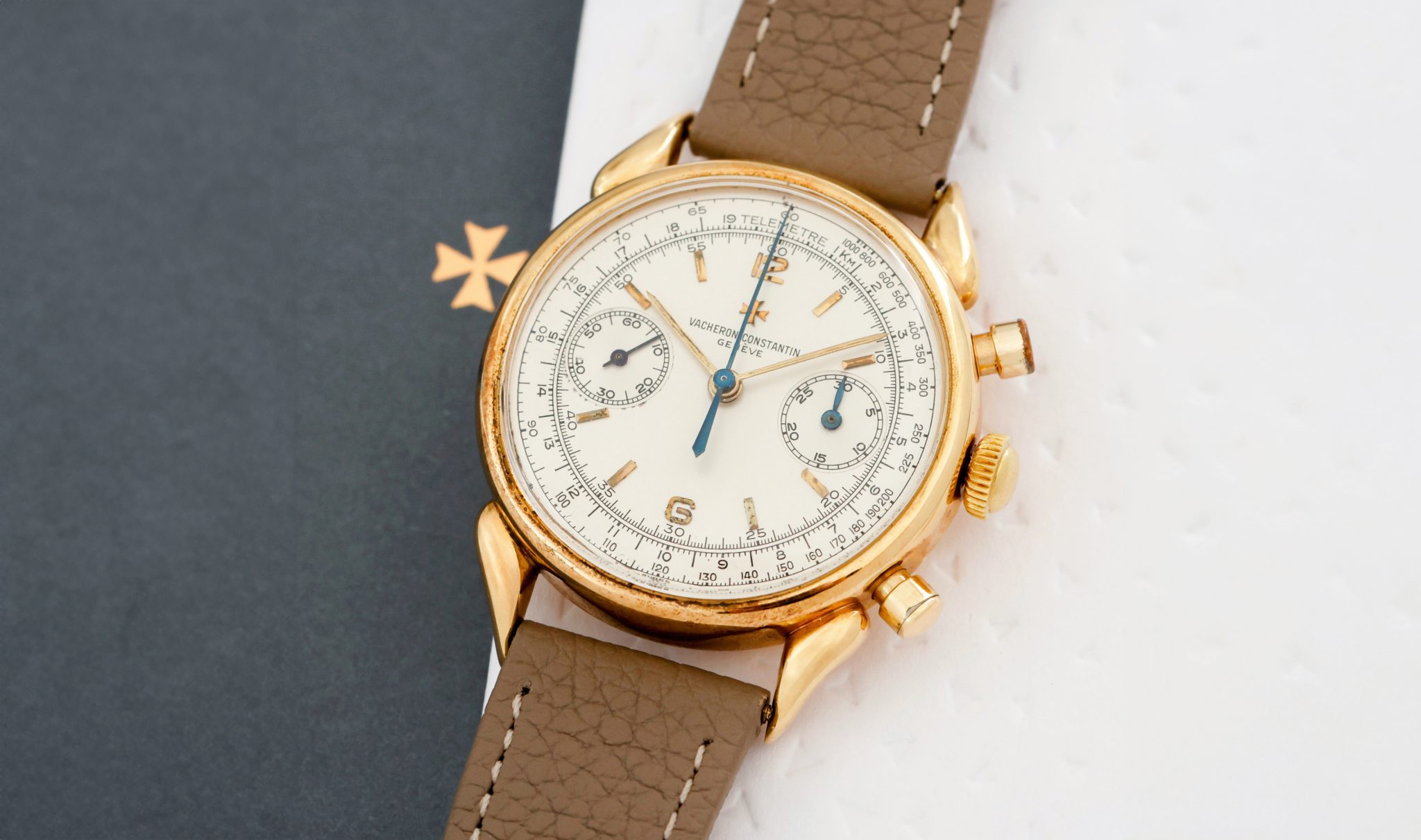
This example appears strong too. It’s one with smaller subdials and a tachymetre scale, historically most of the higher results have been for the bigger-eye no scale dials but int’s in lovely condition, so perhaps not. Case appears strong with one of the deeper lug hallmarks I’ve seen. Dial has some darker spotting and maybe deterioration at the lower left hand very outermost portion, which just should be noted. Either way, what a watch.
We’d like to thank our friends Eqo Time Group for the exceptionally useful and beautiful photography of this example in this article.





